Guided by the CO2 Performance Ladder, Urbastyle, leading concrete street furniture producer in Belgium, demonstrates that sustainability is built on data, measurable progress, and innovation. As part of their supply chain decarbonization, Urbastyle switched to D-Carb lower carbon white cement, reducing emissions by 15% compared to Aalborg White CEMI while maintaining high standard of performance and architectural quality, approving aesthetics, performance and decarbonization can go hand in hand.
What main challenges your company faces in adapting to the stricter CO2 emissions standard in the building and construction sectors?
Jan Laroy: Companies in the construction sector are under pressure to reduce the environmental impact of their materials and production processes. Governments and public administrations are introducing ever stricter sustainability criteria for tenders, and major clients also increasingly expect transparency on CO2 emissions.
Taking the lead Sustainability reporting via the Carbon Performance Framework: necessity and opportunity. In a niche where few use the CO2 Performance Ladder, Urbastyle saw an opportunity to confirm its role as a pacesetter, strengthen ties with cities and municipalities, and drive product innovation. As an expert in architectural concrete, the company aimed to meet stricter sustainability criteria in public tenders while building a solid base for further CO2 reduction. Without certification, it risked losing major contracts, making a structural, proactive approach essential.

With the CO2 Performance Ladder being a powerful tool, how did you translate that into actionable steps?
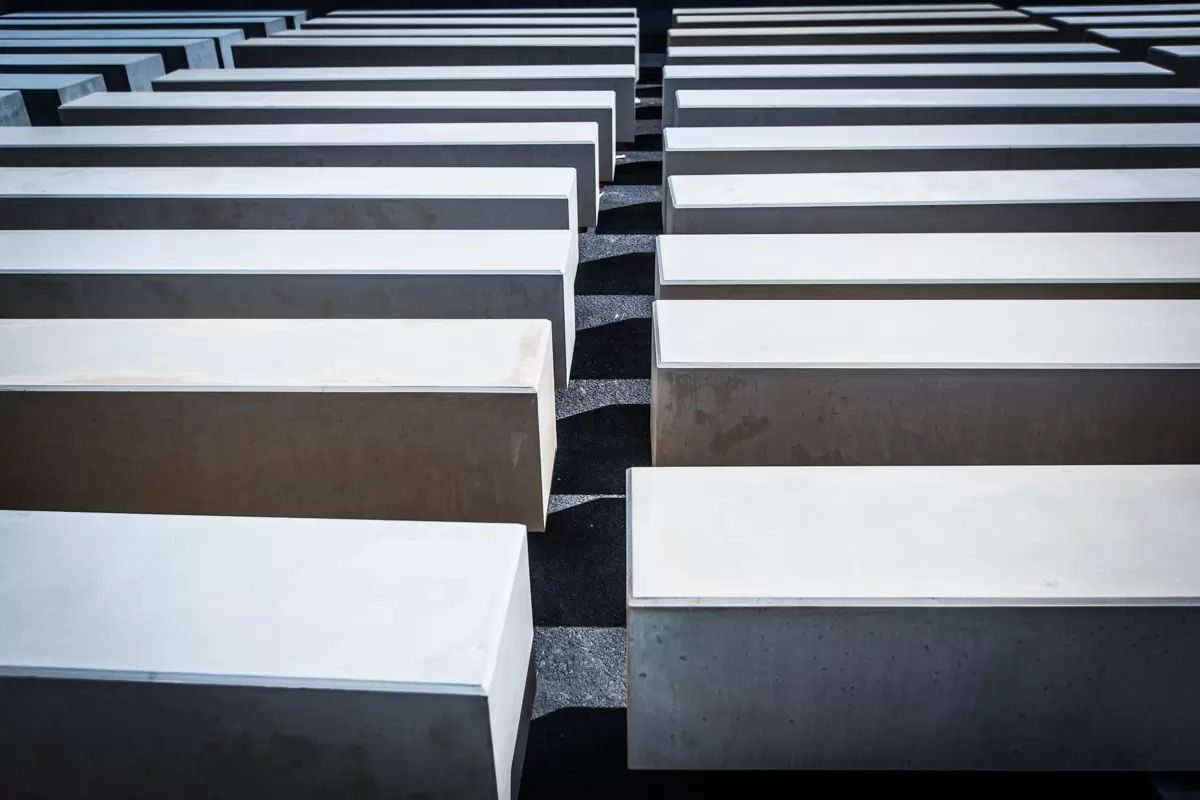
Jan Laroy: Sustainability is not just a nice principle but plays an increasingly important role in future-proofing companies. Urbastyle, an expert in architectural concrete, chose the CO2 Performance Ladder as an objective yardstick to map its impact and underpin strategic choices.
Our pragmatic approach runs from data-driven strategy to certification, creating tangible results. To achieve certification, the company had to accurately document its CO2 emissions, set reduction targets, and demonstrate concrete improvements. Together, we mapped out a clear pathway.
We began by mapping our entire CO2 emissions, identifying the largest sources such as raw materials, transport, and energy consumption, and collecting data through suppliers and internal processes. Based on this, reduction targets and improvement actions were defined. Quick wins included optimising transport flows and energy use on site, while the long-term strategy focused on Scope 3 emissions, drawing suppliers into the effort.
The final step was the successful completion of the audit and certification, which required thorough documentation of reduction objectives and action plans, as well as guidance during the external audit by Copro.
Cement production is known as one of the biggest sources of CO2 emissions. As a precast concrete producer, how does Urbastyle address this challenge in your operations?
Jan Laroy: Chain responsibility is inevitable. We recognize that the greatest CO2 impact lies in cement production and transport, and that the entire supply chain must move forward together.
As a precast concrete producer, we address this challenge by using D-Carb lower carbon white cement in our mixes. D-Carb reduces emissions by 15% compared to Aalborg White CEM I while maintaining the same outstanding early age strength performance and delivering the high whiteness essential for architectural concrete. This allows us to combine meaningful decarbonization with the aesthetics and technical performance our projects demand.
The Mechelen Station project illustrates this approach. We supplied prefabricated wall panels, seating edges, and platform edges, all produced with D-Carb. The panels were used for the exterior, while the platform edges received a polished finish with a roughened top surface for grip. Beyond CO2 reduction, the bright, consistent colour and resistance to staining and aging ensure a uniform appearance, longer service life, less maintenance, and a smaller footprint across the project life cycle.
By choosing lower carbon raw materials and integrating them into our design and production, we demonstrate how sustainability and aesthetics can reinforce one another, setting an example for the sector and accelerating the transition to a more sustainable environment.
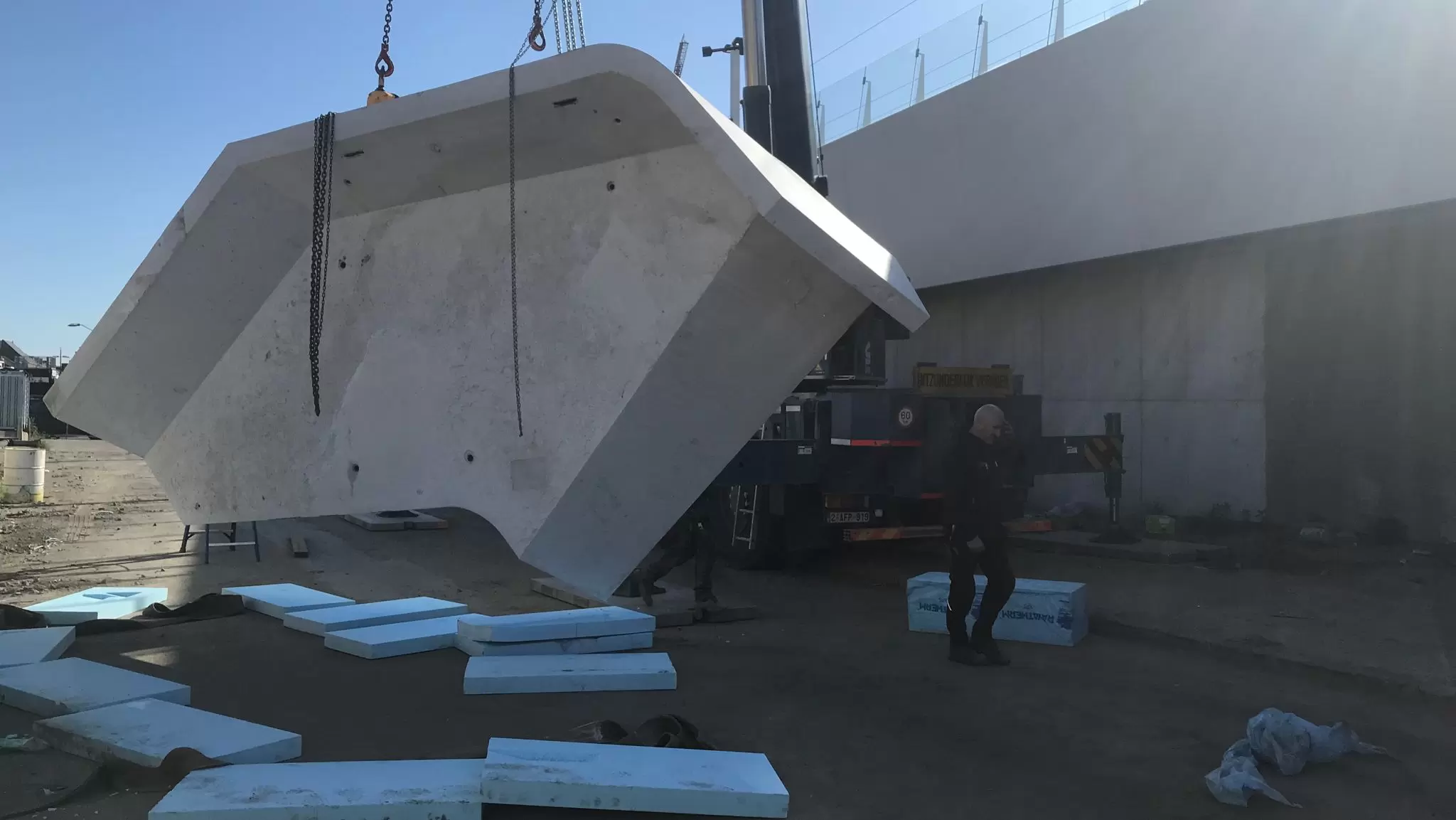

Mechelen Station Extenstion Project - Precast concrete wall panels and pillars

What is the CO₂ Performance Ladder?
It’s a sustainable procurement and management tool designed to help organizations reduce CO₂ emissions in their operations, projects, and supply chains. Companies that achieve certification on the Ladder can gain a competitive advantage in public tenders through a fictitious discount on their bid price, which increases with higher certification levels (the Ladder has five levels)
Status in Belgium
• Pilot Phase (2019–2023):
Belgium tested the Ladder in 24 public tenders across Flanders, Wallonia, and Brussels, mainly in infrastructure and construction projects. Both contracting authorities and companies reported positive experiences, seeing it as a valuable tool for reducing climate impact and improving sustainability performance
• Structural Implementation (2025 onward):
Since January 2025, Belgium has started phased implementation in government tenders. Initially, it applies to contracts above €5 million, then €3 million in 2026, and €1 million in 2027. This approach emphasizes sustainability in public procurement and gives certified companies a clear advantage
• Market Impact:
The Ladder is becoming a strategic differentiator for companies in Belgium, especially in construction and infrastructure. It aligns with broader EU climate goals and Belgium’s ambition to decarbonize sectors like cement and concrete
How It Works
• Certification: Companies document their CO₂ emissions, set reduction targets, and implement improvement actions. Certification requires an external audit.
• Tender Advantage: Certified companies receive a fictitious discount on their bid price, improving their ranking without lowering the actual price.
• Scope: Covers Scope 1, 2, and 3 emissions, encouraging supply chain engagement

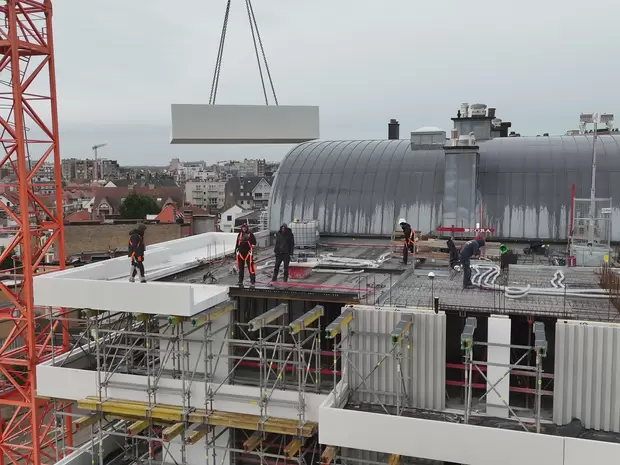
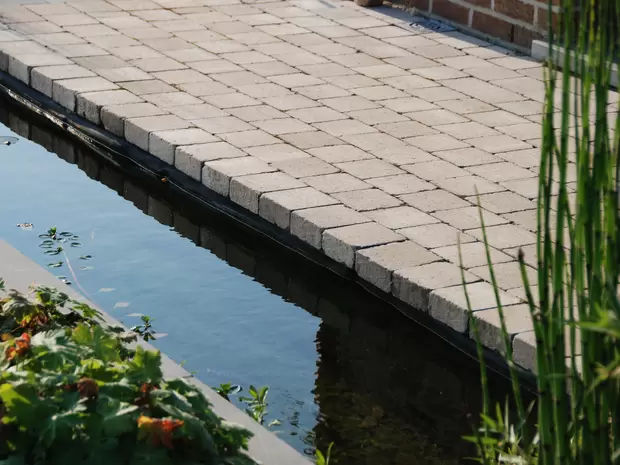
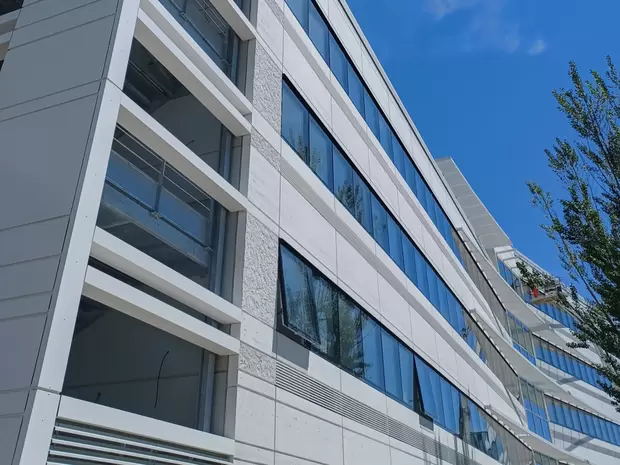
Share on